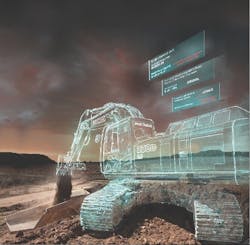Whether bad, good, or a nebulous combination of the two, our world is changing rapidly and permanently.
Venkat Eswara, VP of product marketing for Syncron, a manufacturing tech provider that works with OEMs such as JCB, Hitachi Industries, and Mazda shares his thoughts on technology trends for 2021.
Pandemic drives new customer experience
From remote service to “contactless” demos and test drives, manufacturing has gone to great lengths in its attempts to modify existing operations so that it can meet customer needs in a “Covid safe” manner. And with customers becoming more accustomed to these offerings, and workers becoming more comfortable with these new methods, expect the manufacturing industry to further integrate these alternatives into its long-term approaches.
This will allow manufacturers to not only deliver more personalized service, but it will also give them the opportunity to further diversify their operations and build new workforces.
New tech officially becomes “mainstream”
The Covid-19 pandemic has caused the manufacturing industry to scrutinize its entire infrastructure and operations. And with that, manufacturing businesses are beginning to more widely embrace sophisticated computing technologies to help them optimize weaknesses that may have been uncovered during the Covid era.
For example, more and more manufacturers are beginning to embrace IoT technology to provide greater verification of sourcing provenance, while others are looking at ways in which technology, such as AI, ML, and IoT, can be used to support remote workforces to make them more agile and effective. This means that 2021 could be the dawn of a manufacturing sector that looks much different technologically from anything that we have seen in the past.
A new dawn for network collaboration
Across all industries, collaboration in consumer and enterprise markets has become a necessity for incumbents to retain market share due to significant encroachment from digital disruptors. And the manufacturing sector will need to embrace the same approach moving forward.
To remain competitive, manufacturers need to shift from the traditional linear contracts in the supply chain to multiparty collaborative partners with greater focus on services end-customer demands.
Source: Syncron





